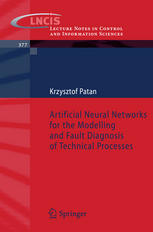Krzysztof Patan (auth.)9783540798729, 3540798722, 9783540798712, 3540798714
An unappealing characteristic of all real-world systems is the fact that they are vulnerable to faults, malfunctions and, more generally, unexpected modes of – haviour. This explains why there is a continuous need for reliable and universal monitoring systems based on suitable and e?ective fault diagnosis strategies. This is especially true for engineering systems,whose complexity is permanently growing due to the inevitable development of modern industry as well as the information and communication technology revolution. Indeed, the design and operation of engineering systems require an increased attention with respect to availability, reliability, safety and fault tolerance. Thus, it is natural that fault diagnosis plays a fundamental role in modern control theory and practice. This is re?ected in plenty of papers on fault diagnosis in many control-oriented c- ferencesand journals.Indeed, a largeamount of knowledgeon model basedfault diagnosis has been accumulated through scienti?c literature since the beginning of the 1970s. As a result, a wide spectrum of fault diagnosis techniques have been developed. A major category of fault diagnosis techniques is the model based one, where an analytical model of the plant to be monitored is assumed to be available. |
Table of contents :
Front Matter….Pages –
Introduction….Pages 1-6
Modelling Issue in Fault Diagnosis….Pages 7-27
Locally Recurrent Neural Networks….Pages 29-63
Approximation Abilities of Locally Recurrent Networks….Pages 65-75
Stability and Stabilization of Locally Recurrent Networks….Pages 77-112
Optimum Experimental Design for Locally Recurrent Networks….Pages 113-122
Decision Making in Fault Detection….Pages 123-140
Industrial Applications….Pages 141-185
Concluding Remarks and Further Research Directions….Pages 187-189
Back Matter….Pages – |







Reviews
There are no reviews yet.